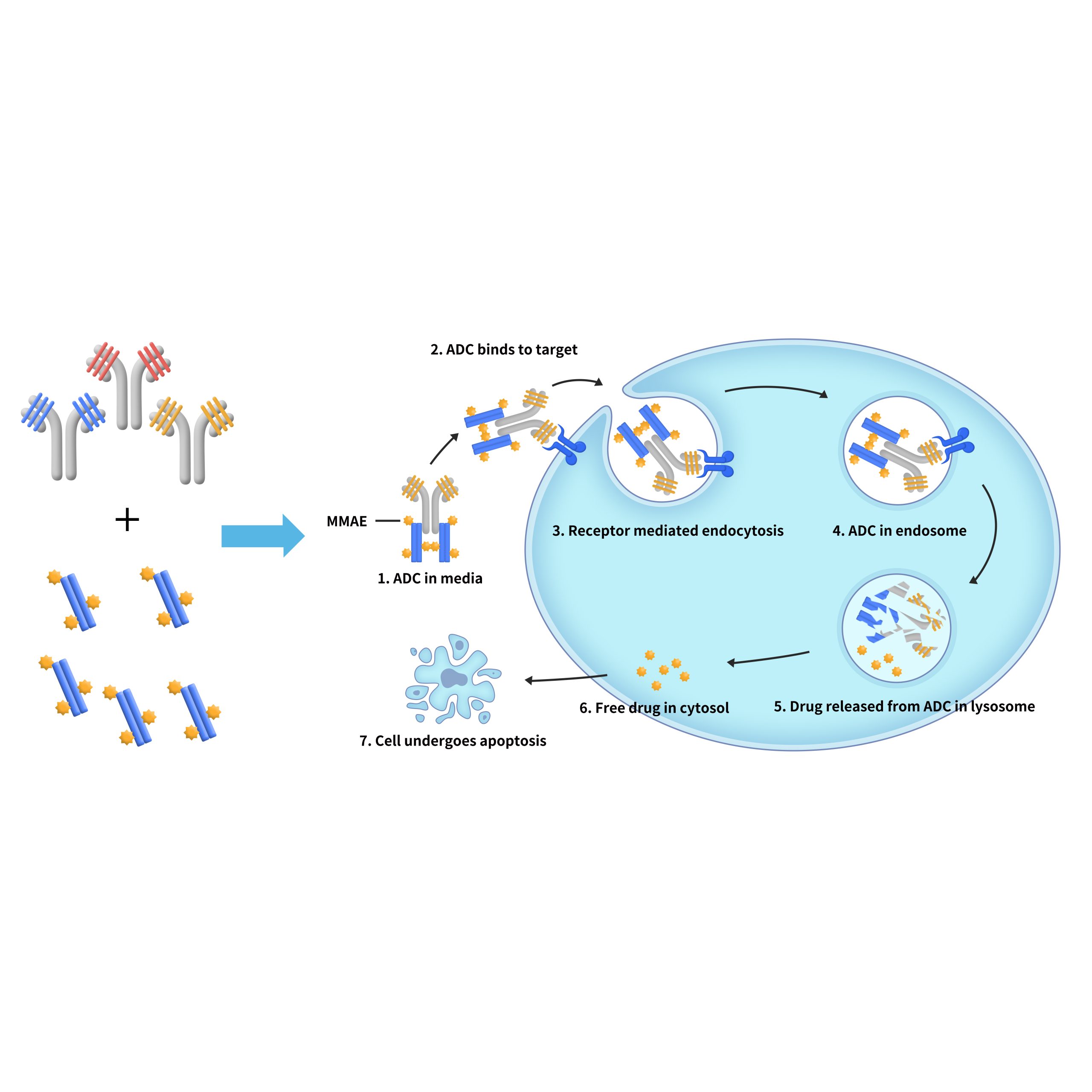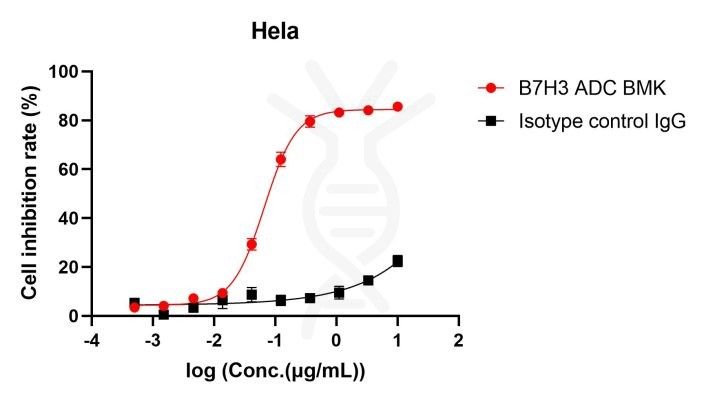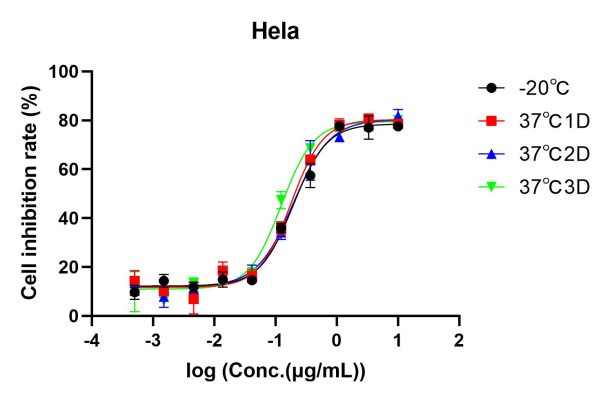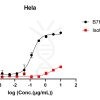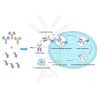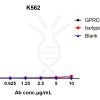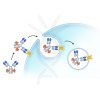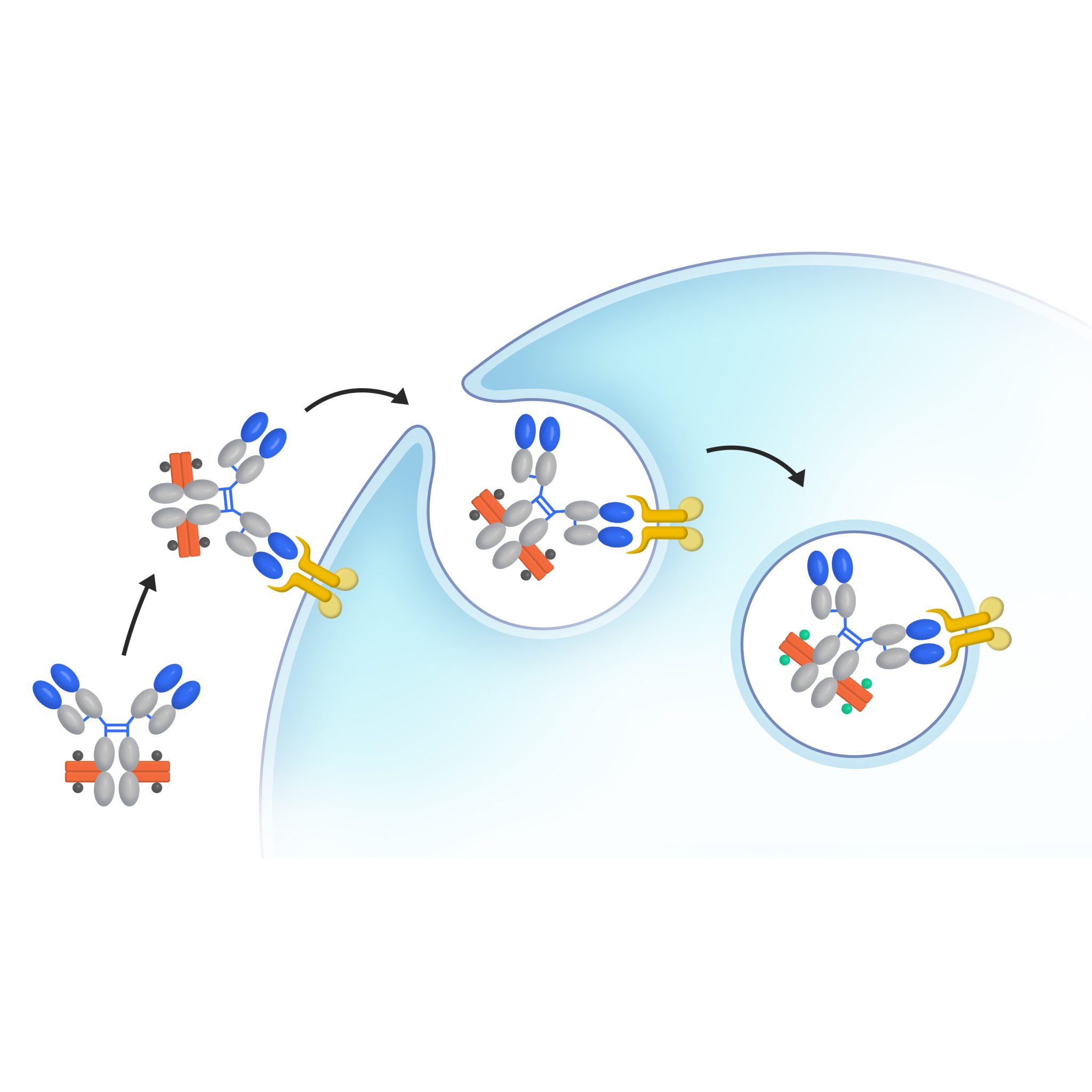
DiTag™ pH-sensitive IgG labeling reagents offer a convenient way to measure antibody internalization. These reagents use a pH-sensitive fluorescent dye conjugated Fc binding protein, which forms a complex with IgG antibodies. Upon internalization, the acidic environment enhances the fluorescence signal, indicating internalization activity. By measuring fluorescence intensity, researchers can assess internalization efficiency and gain insights into antibody uptake mechanisms, helping optimize antibody-based therapies and drug delivery systems.

The fluorescent signal from GPRC5D ADC BMK-AME100002 conjugate is only detected in GPRC5D positive cells (K562-GPRC5D stable expression cell line) and not in parental K562 cells, indicating specific internalization.
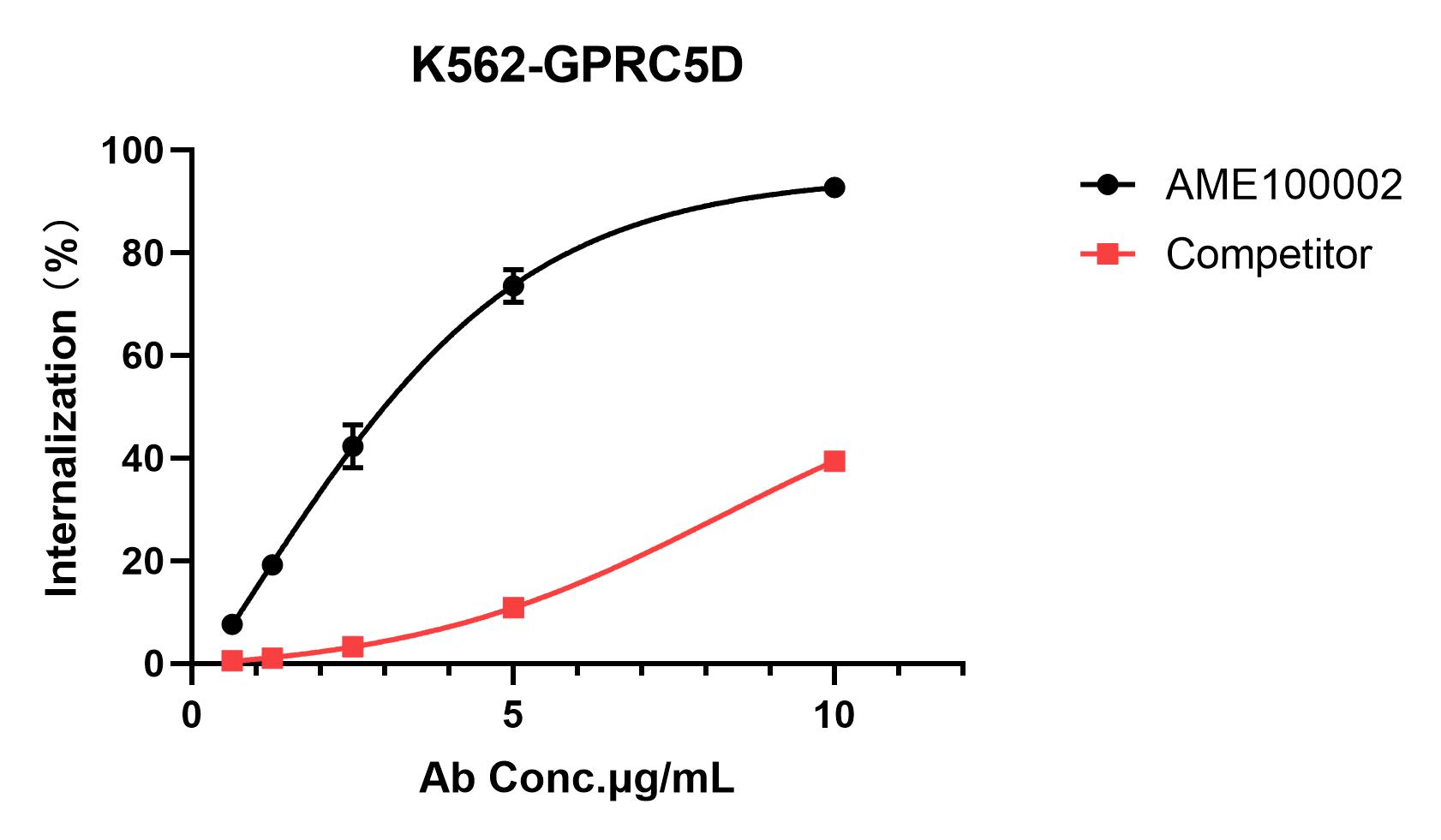
Comparison of internalization efficiency between AME100002 and a competitor reagent on GPRC5D-positive cells (K562-GPRC5D stable expression cell line). AME100002 requires less reagent and shorter incubation time while demonstrating higher sensitivity. It is the most cost-effective pH-sensitive fluorescence IgG labeling reagent available. This pH-sensitive IgG labeling reagent is compatible with human IgG1, IgG2, IgG3, IgG4, rabbit IgG, and mouse IgG subtypes (IgG1, IgG2a, IgG2b, IgG3).

